Abstract
Hospital corporate restructuring is the segmentation of assets or functions of the hospital into separate corporations. While these functions are almost always legally separated from the hospital, their impact on hospital policymaking may be far more direct. This study examines the effects of corporate restructuring by community hospitals on the structure, composition, and activity of hospital governing boards. In general, we expect that the policymaking function of the hospital will change to adapt to the multicorporate structure implemented under corporate restructuring, as well as the overlapping boards and diversified business responsibilities of the new corporate entity. Specifically, we hypothesize that the hospital board under corporate restructuring will conform more to the "corporate" model found in the business/industrial sector and less to the "philanthropic" model common to most community hospitals to date. Analysis of survey data from 1,037 hospitals undergoing corporate restructuring from 1979-1985 and a comparison group of 1,883 noncorporately restructured hospitals suggests general support for this hypothesis. Implications for health care governance and research are discussed.
Full text
PDF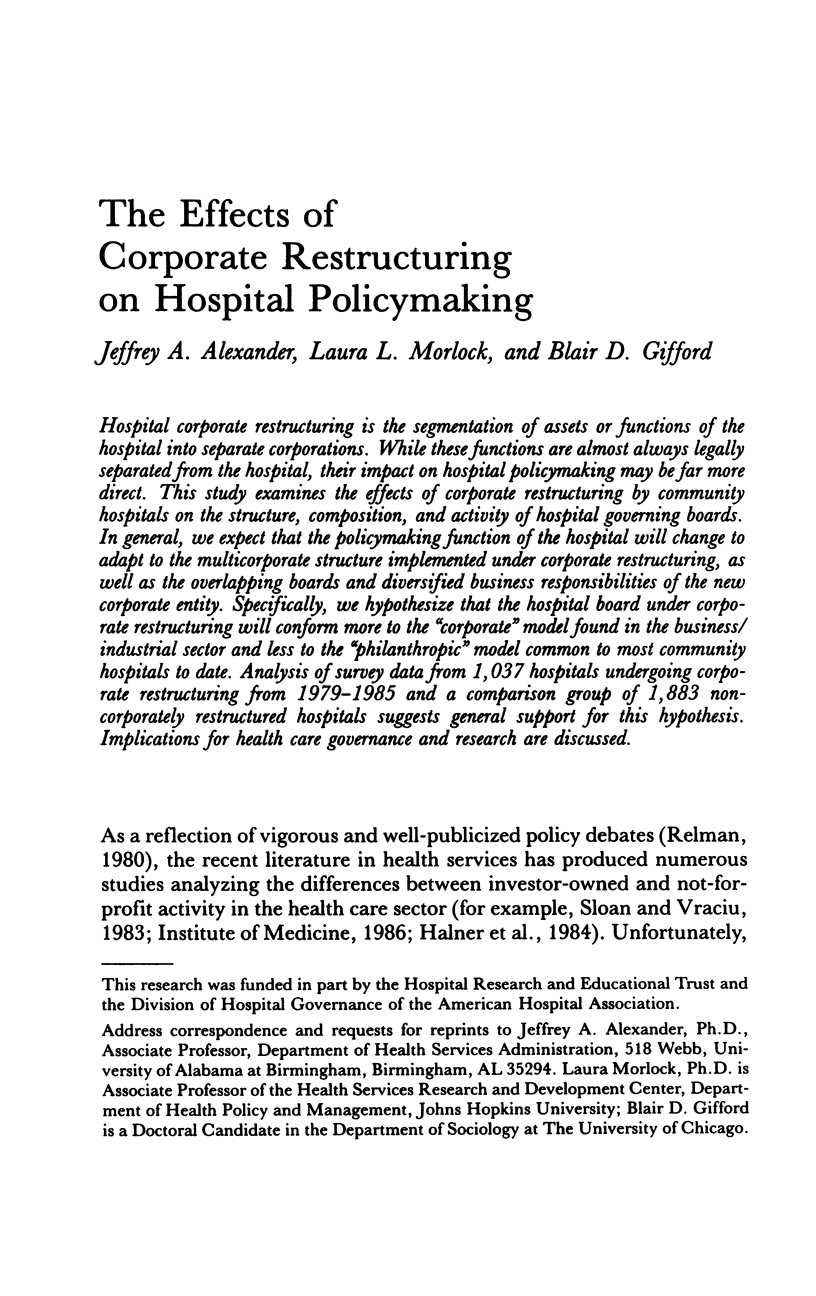
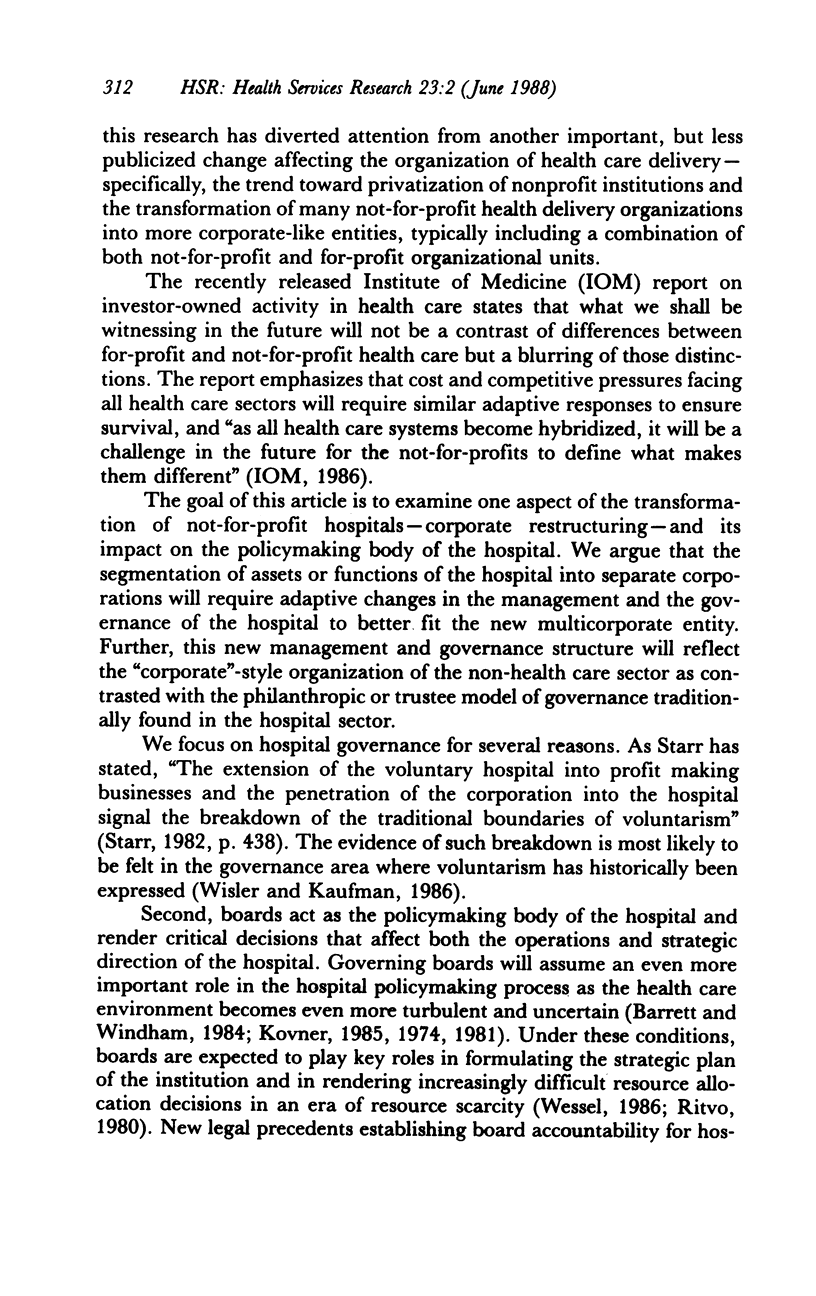
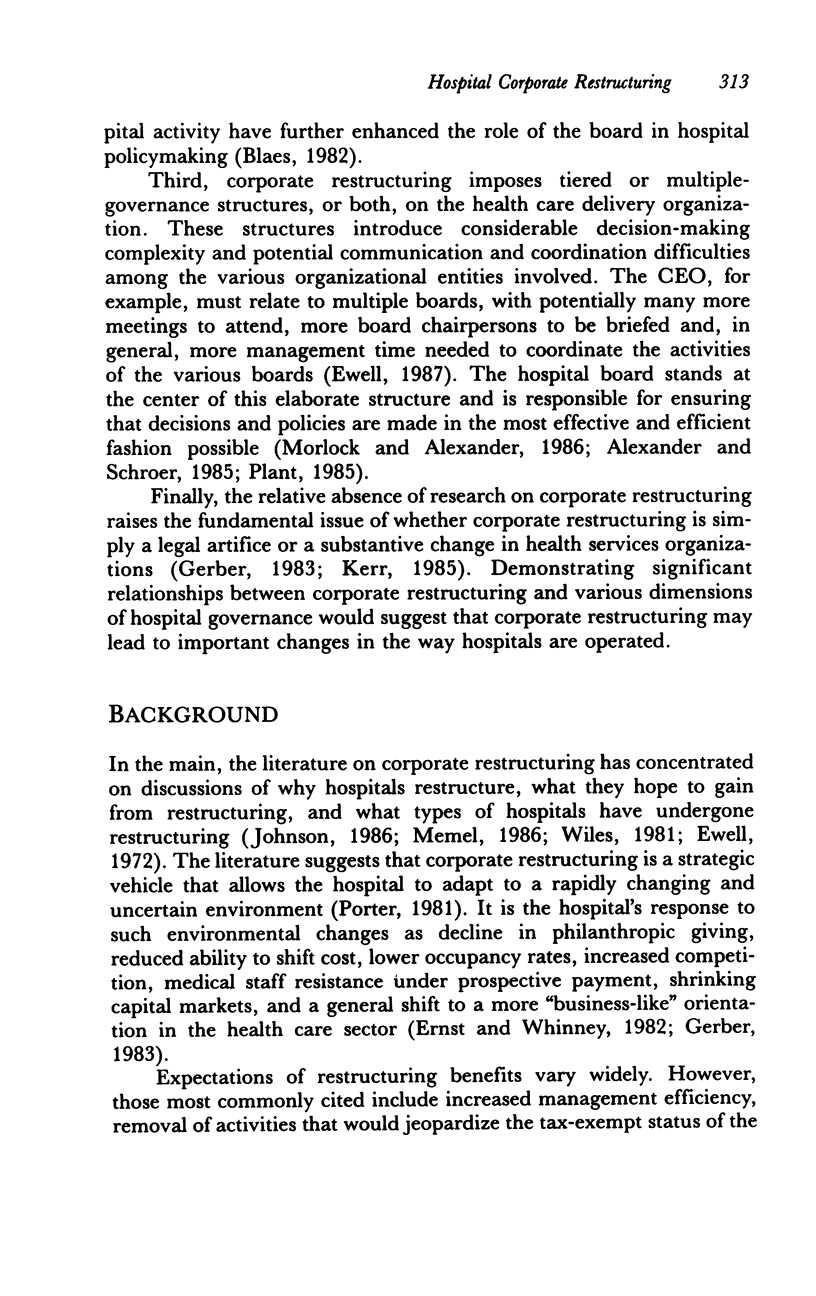
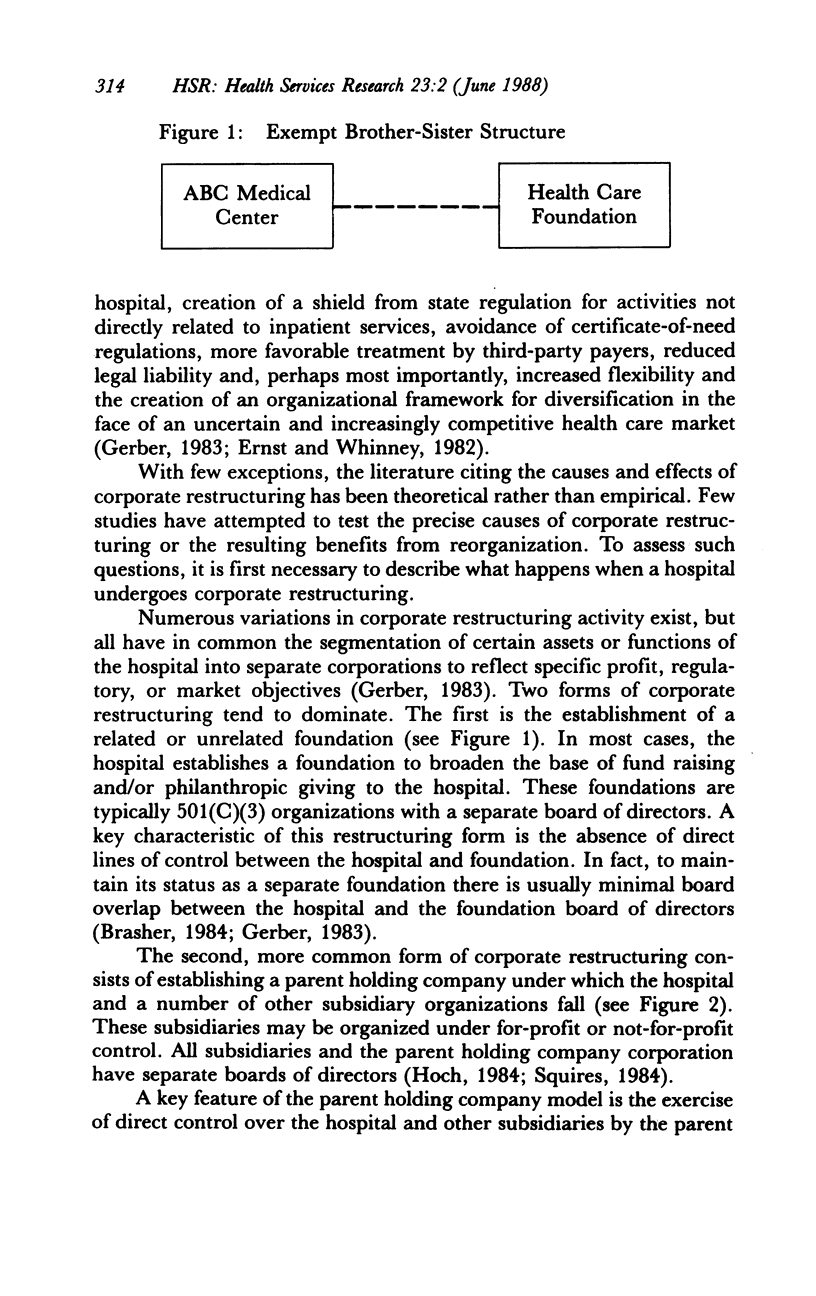
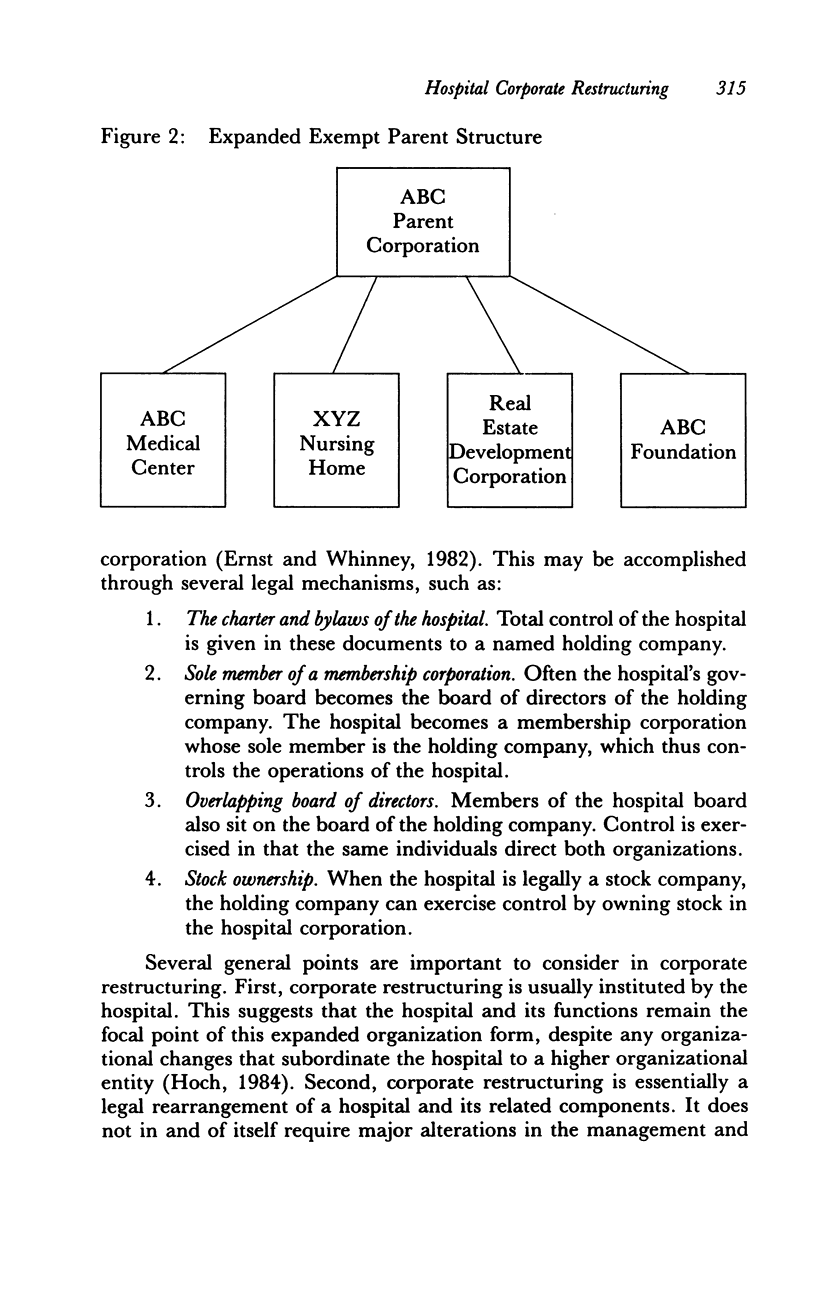

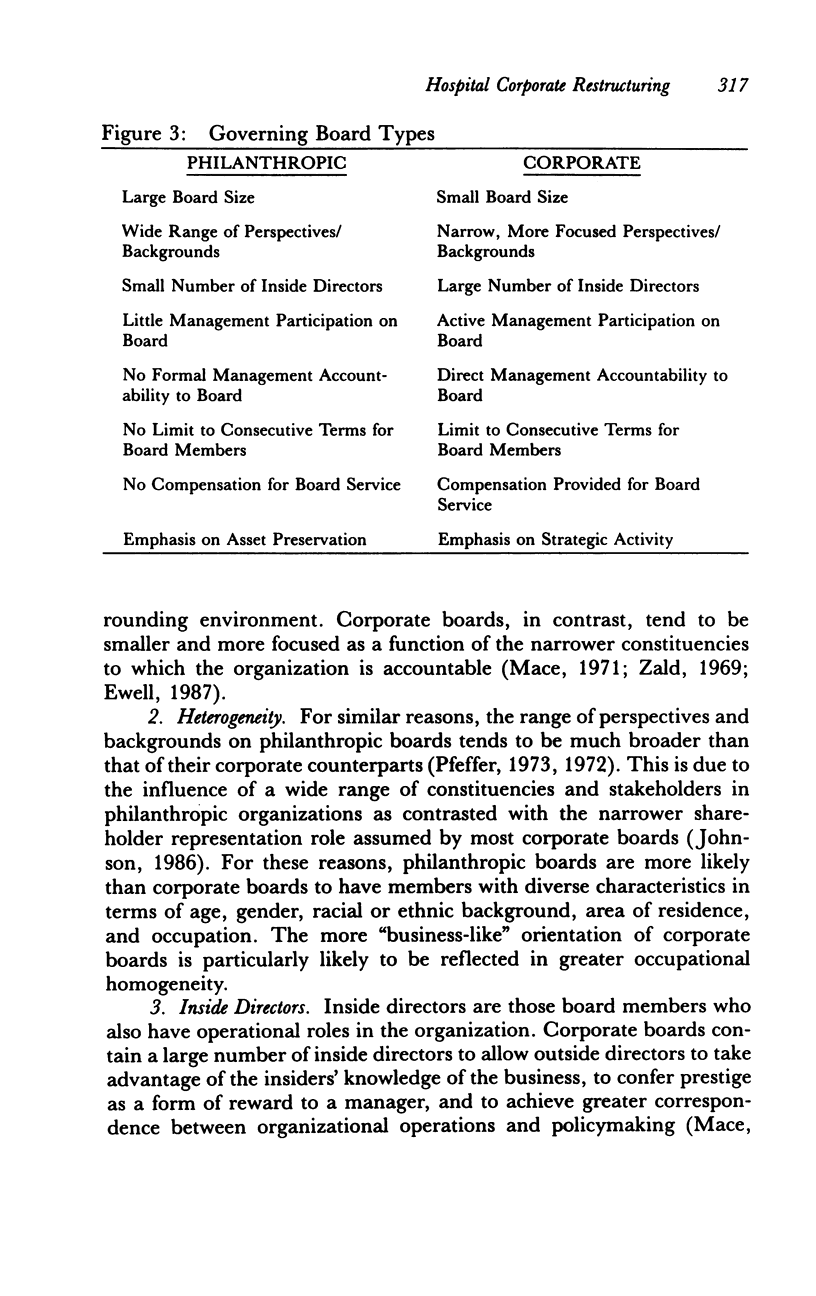
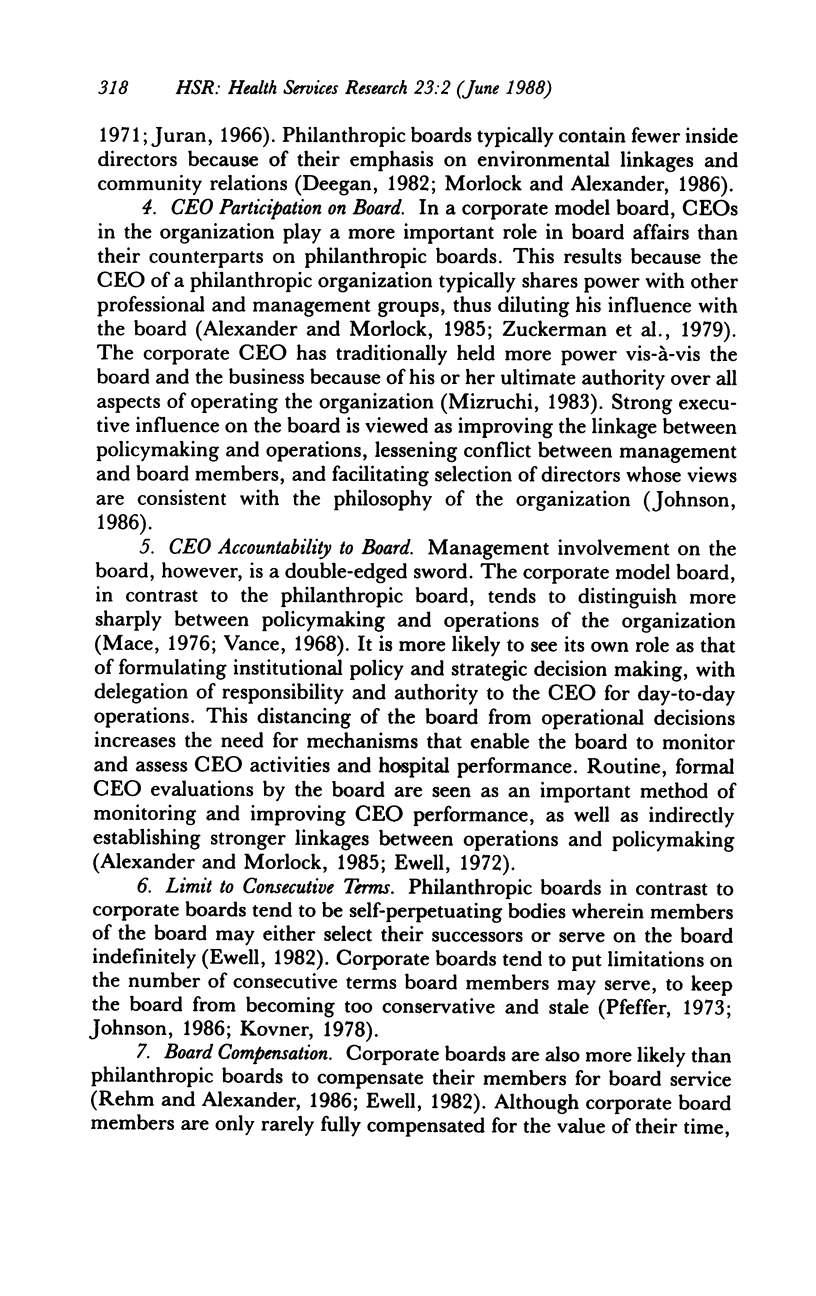
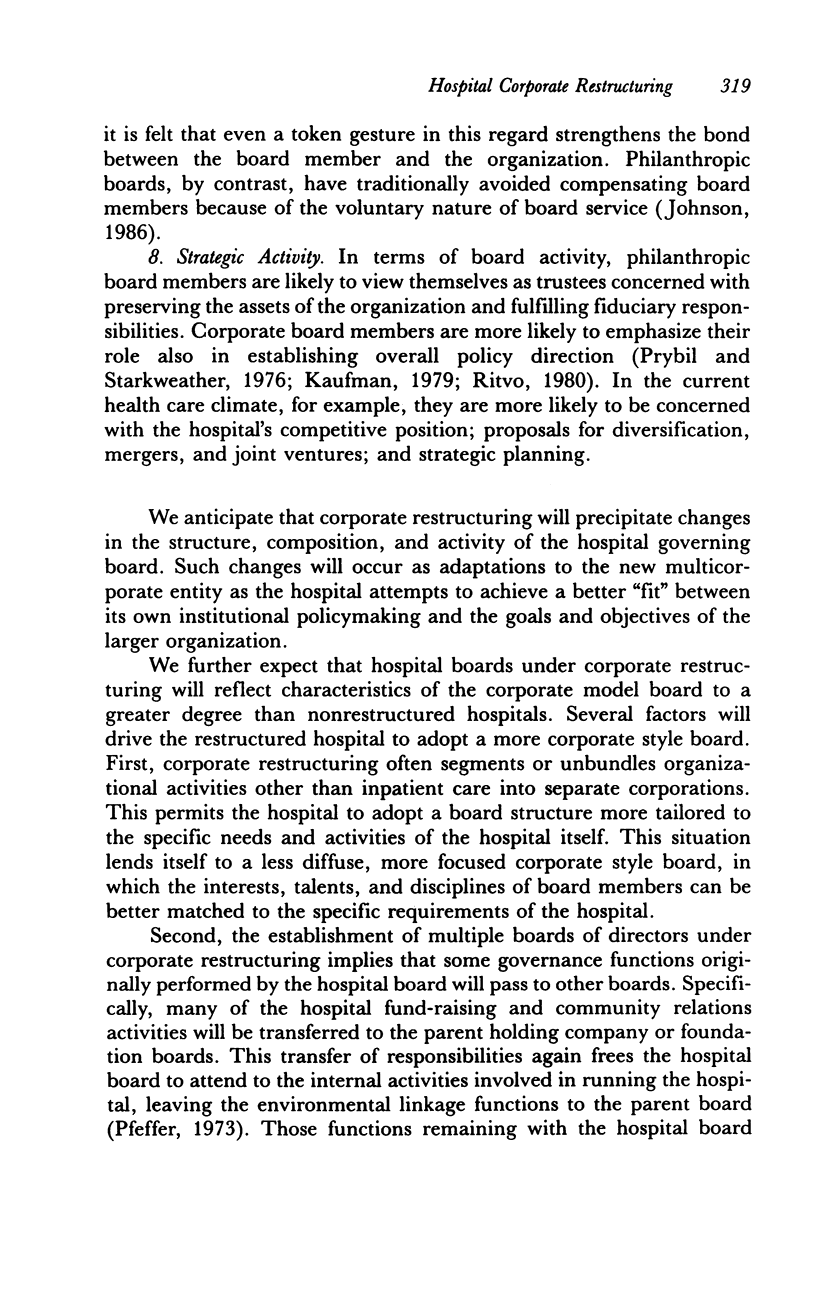
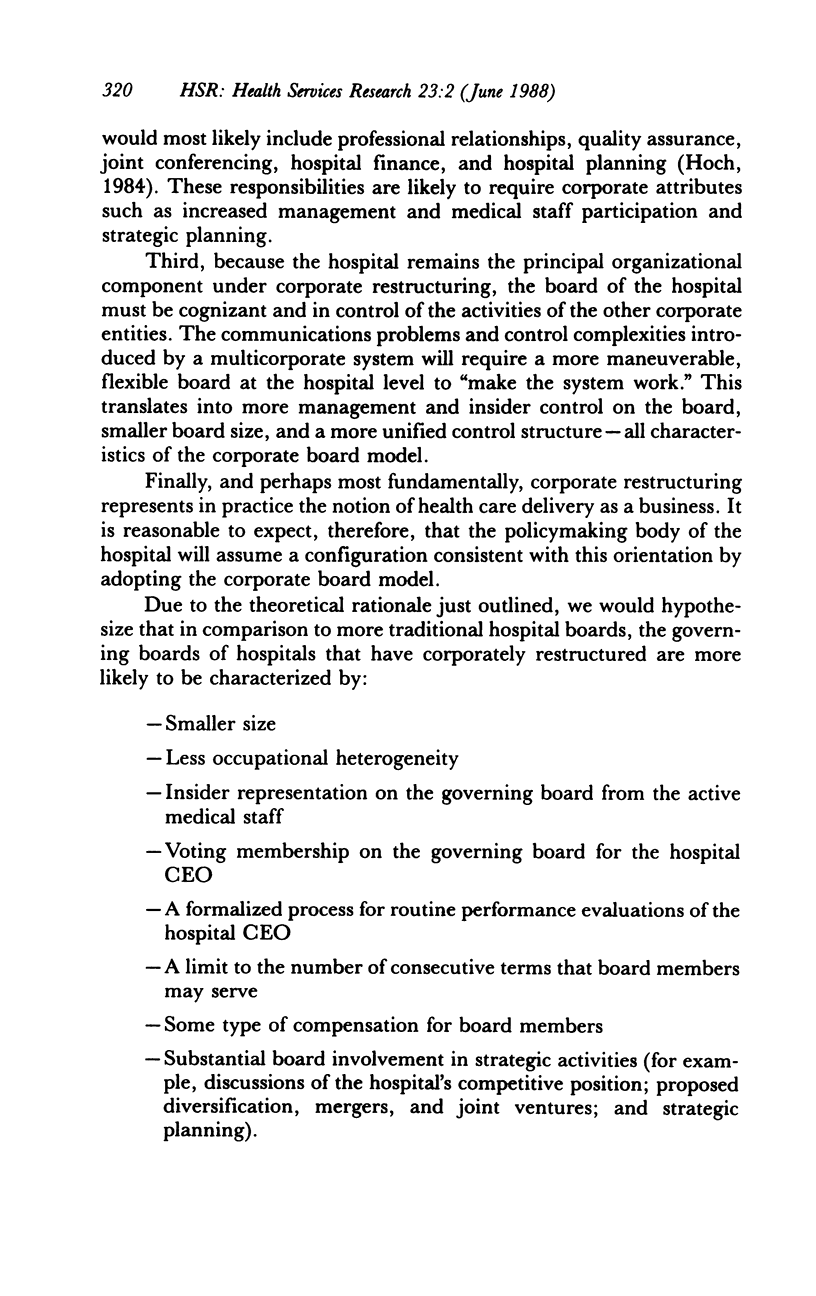
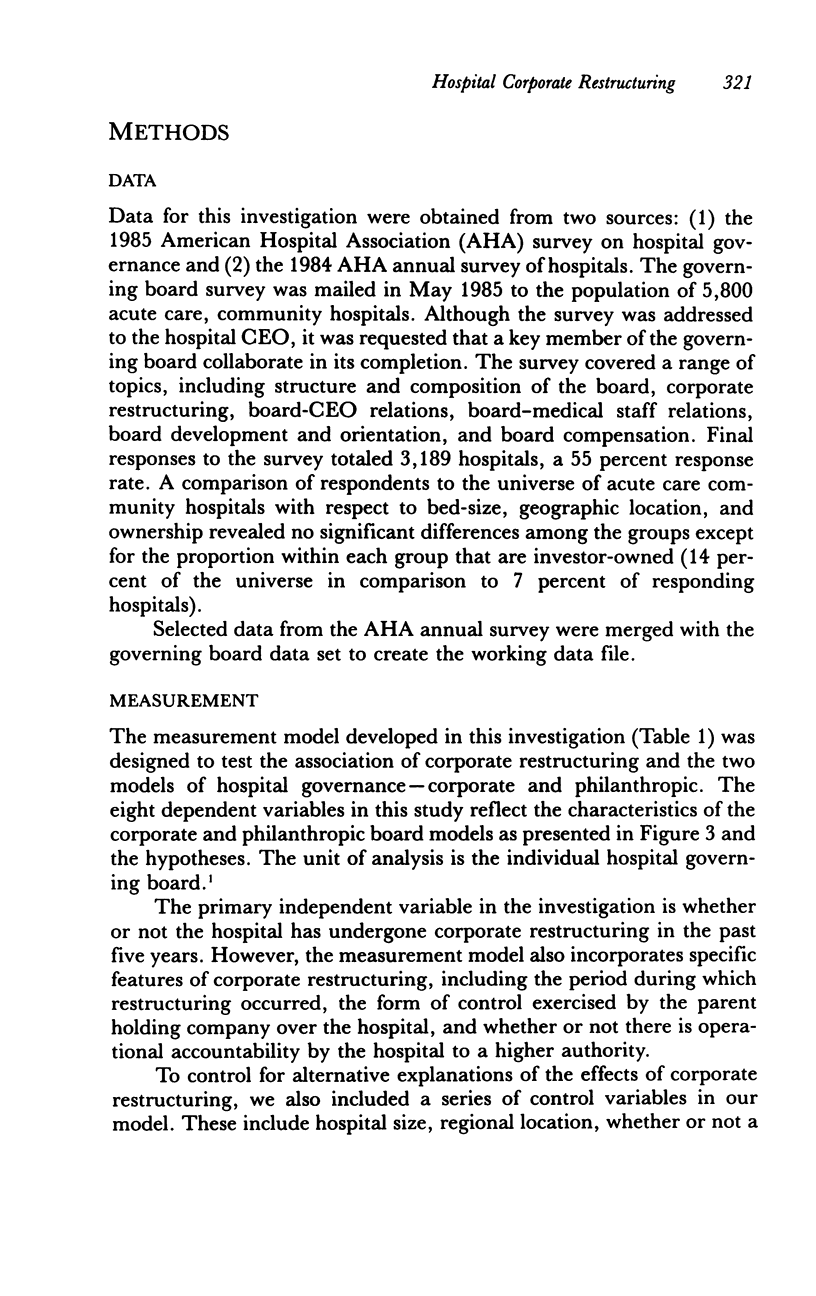
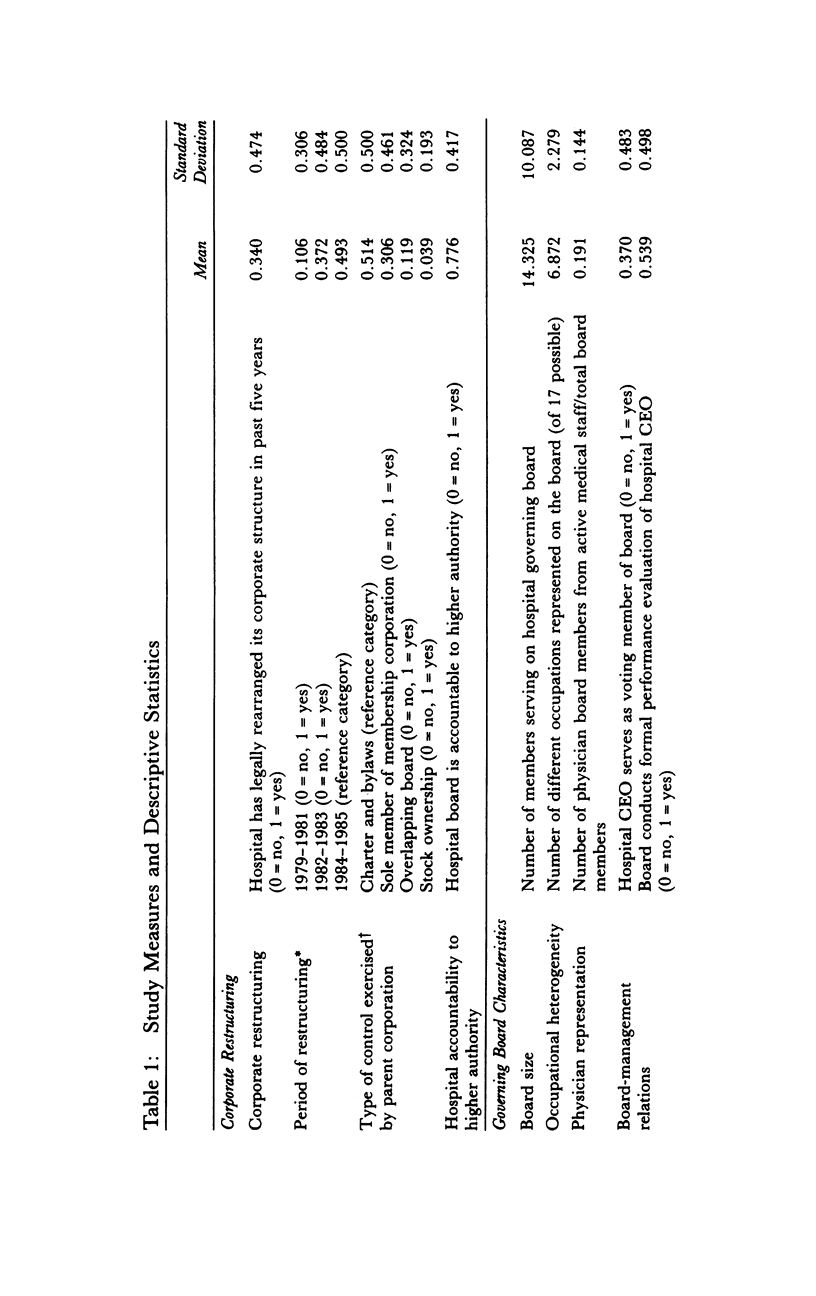
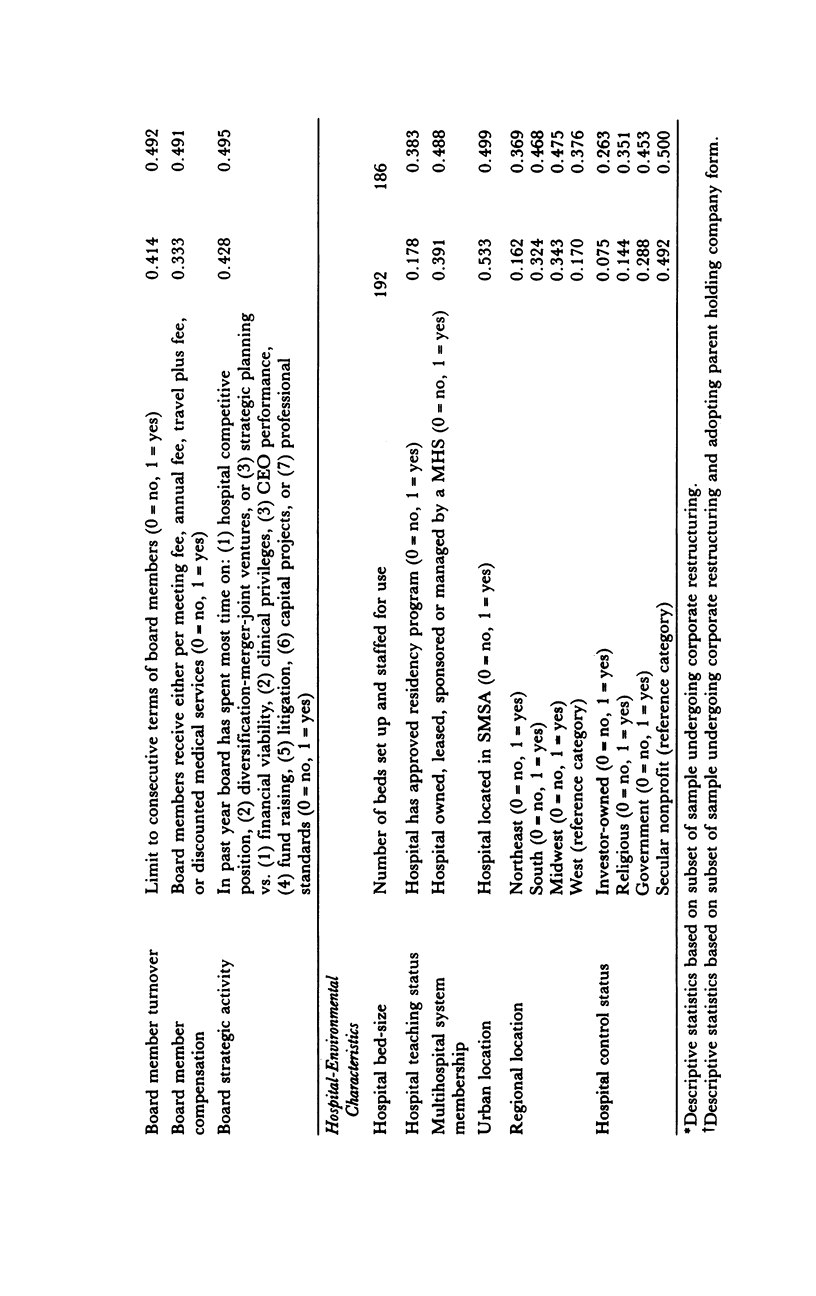
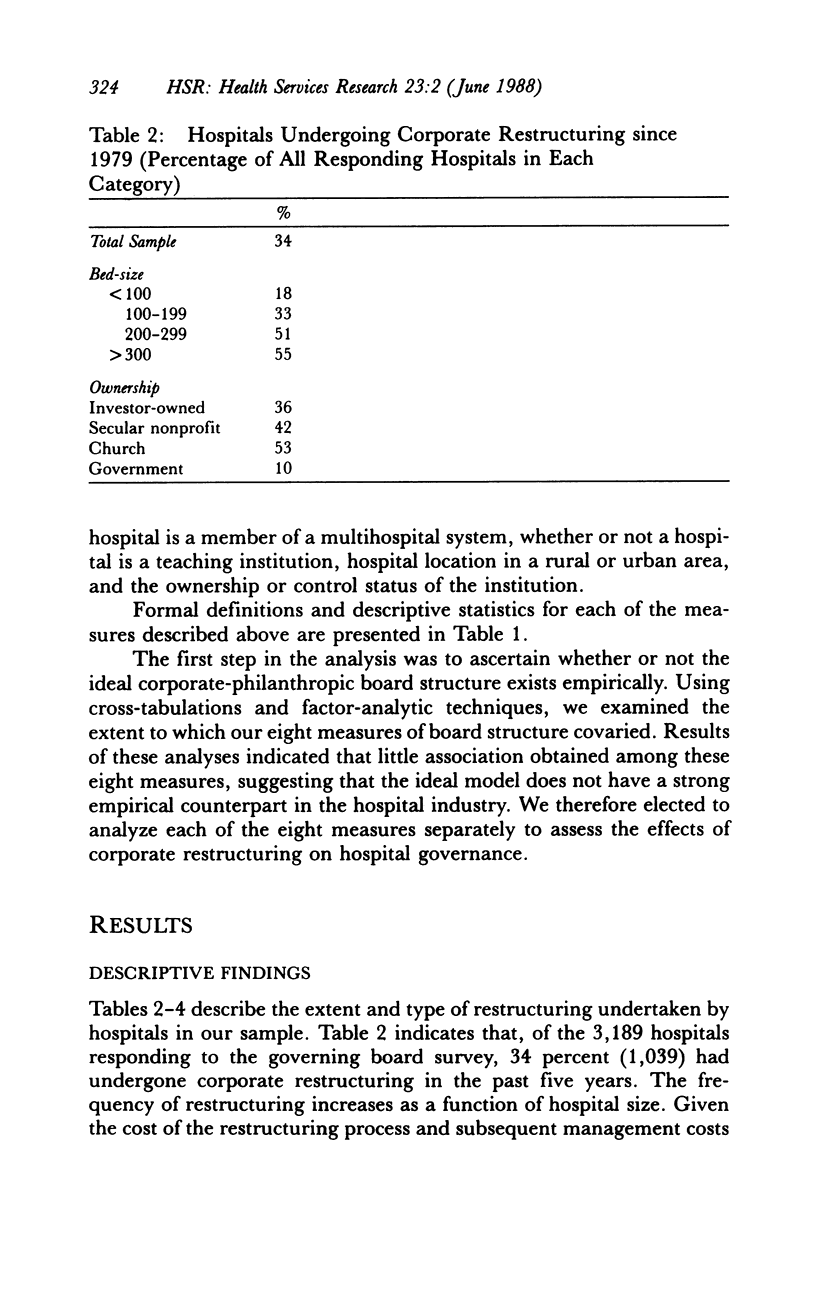




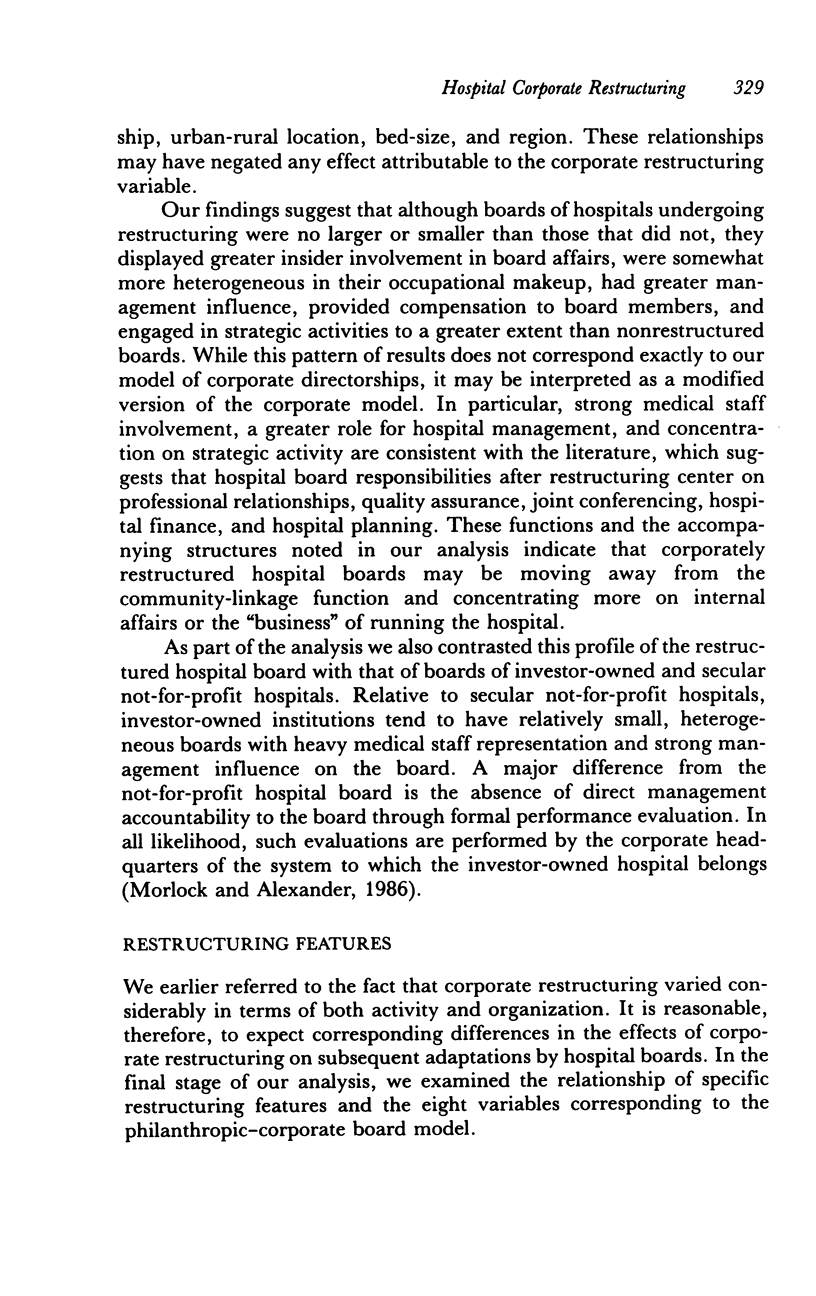
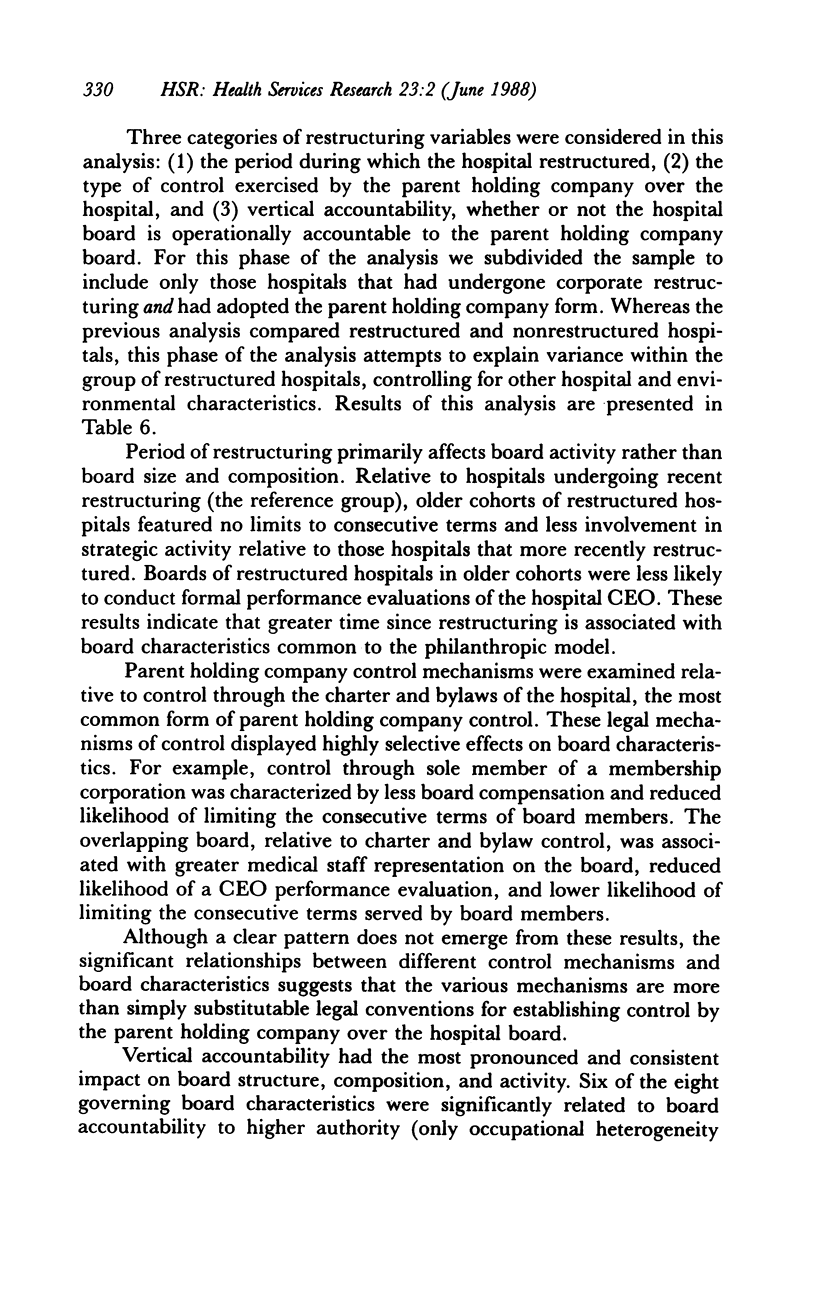
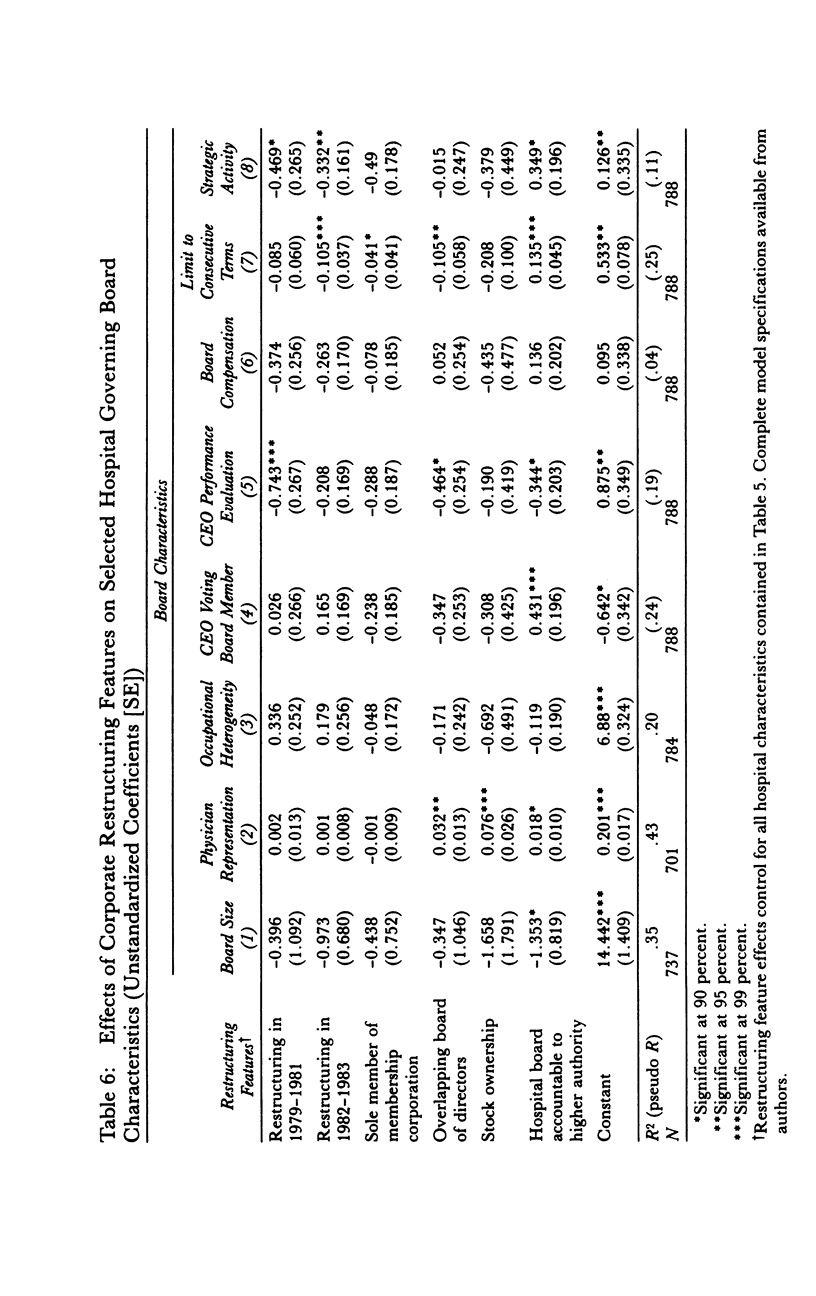
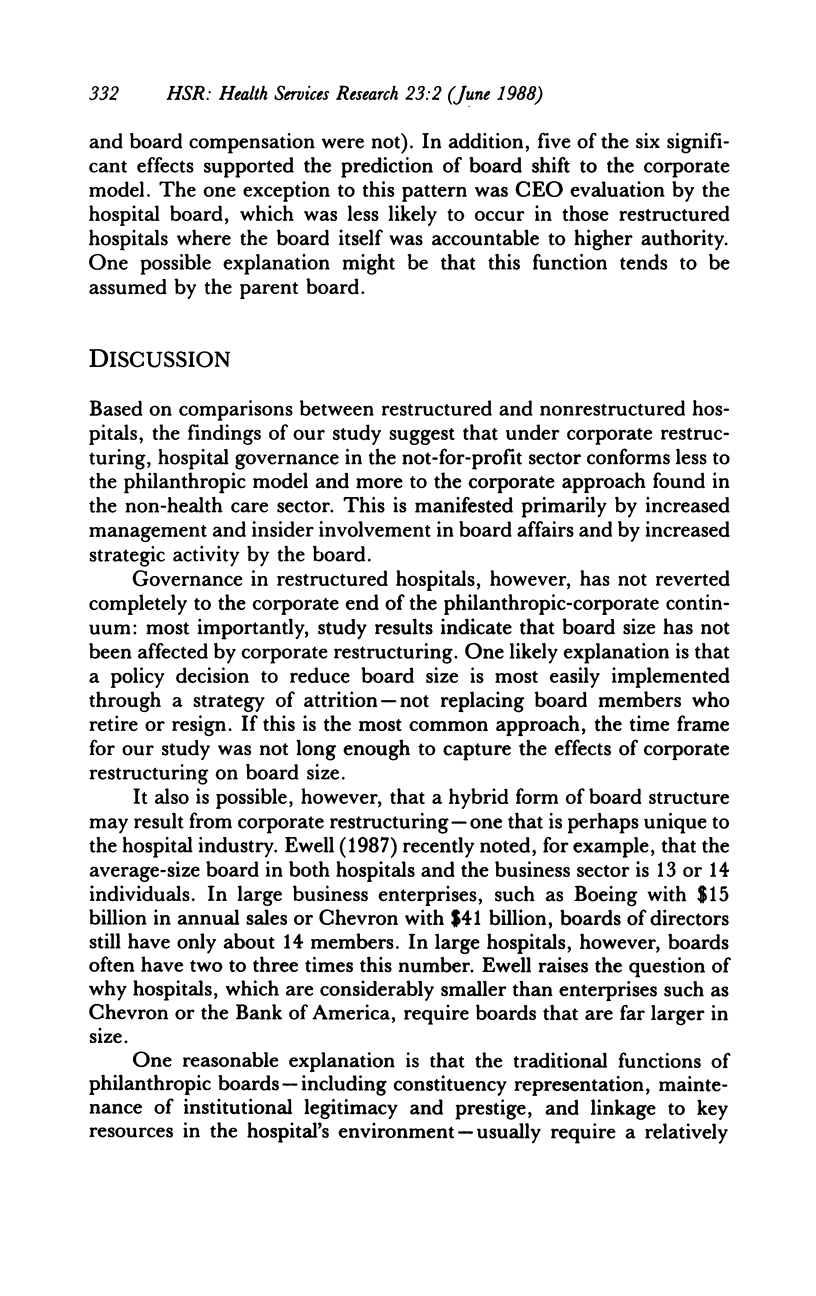
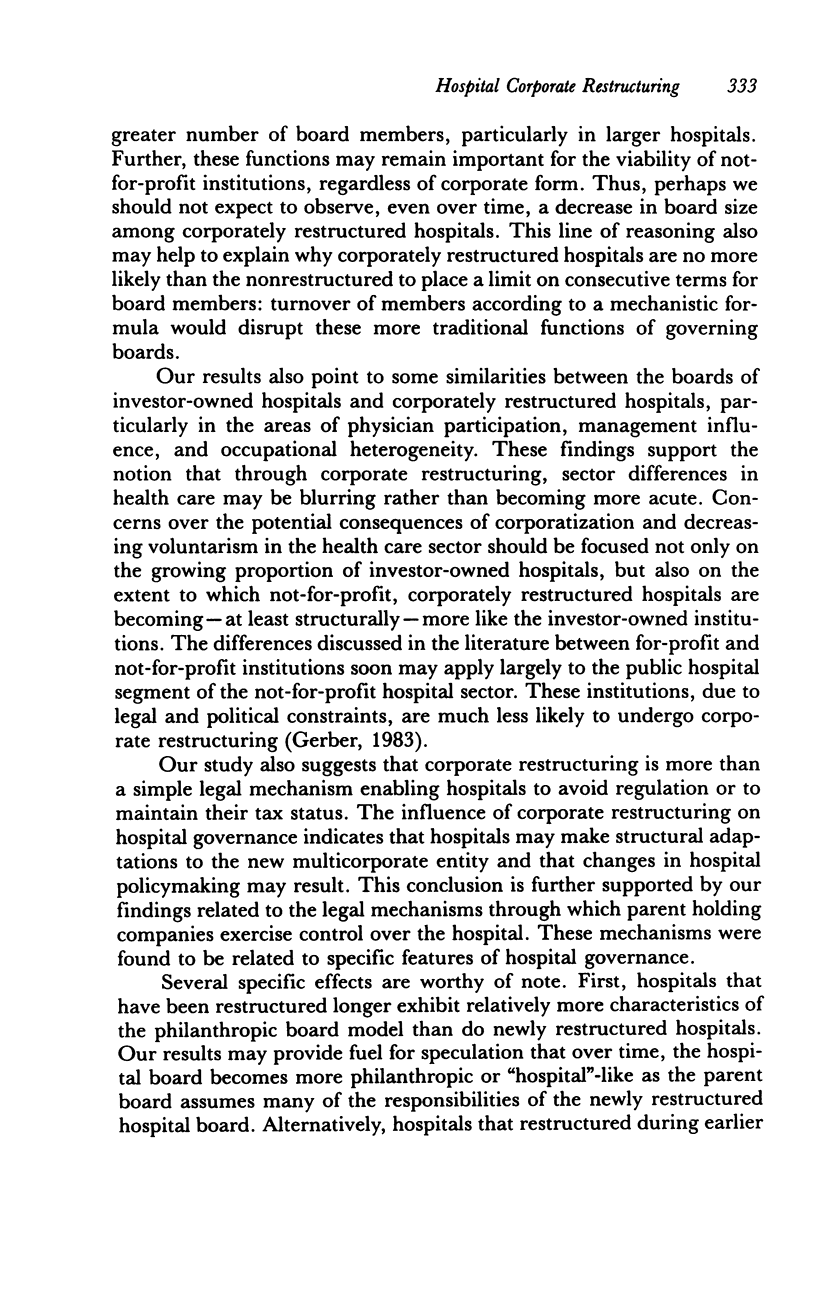
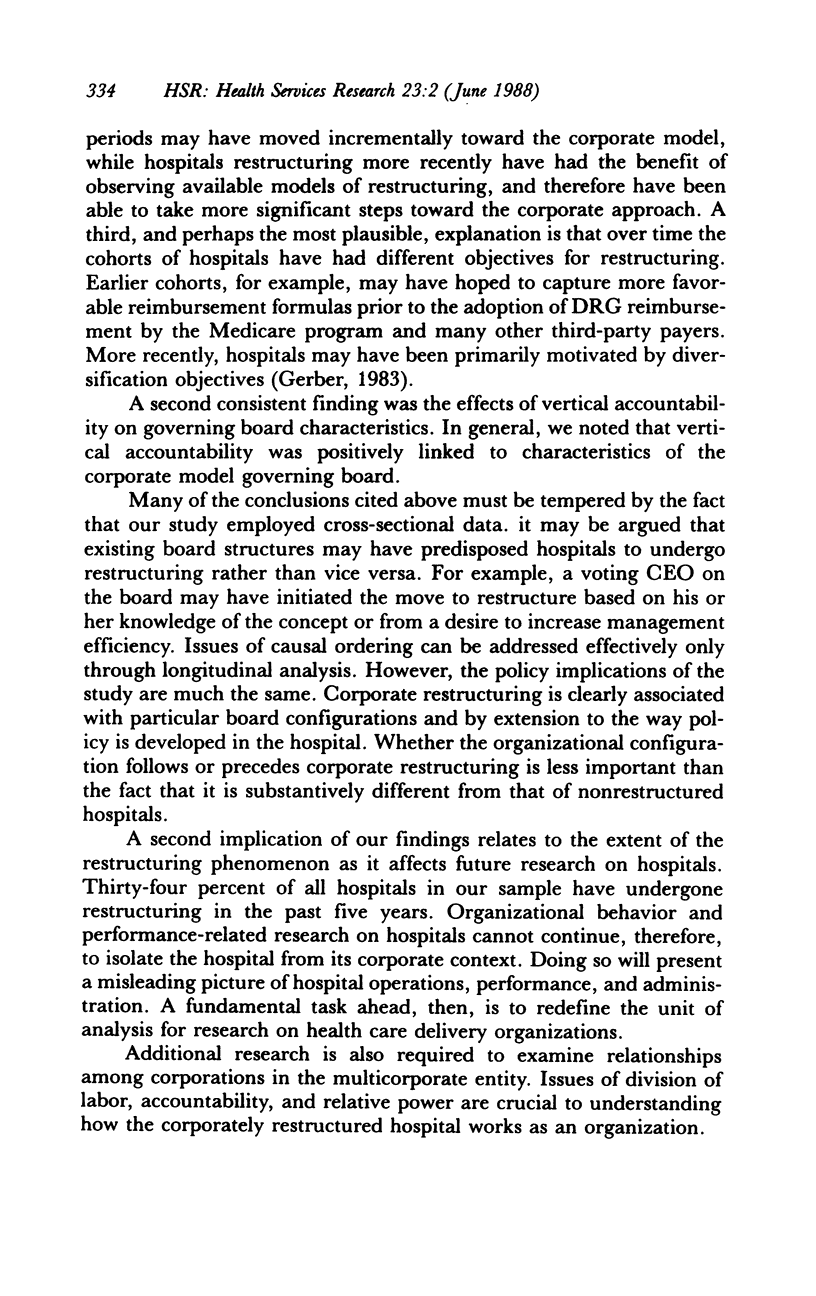
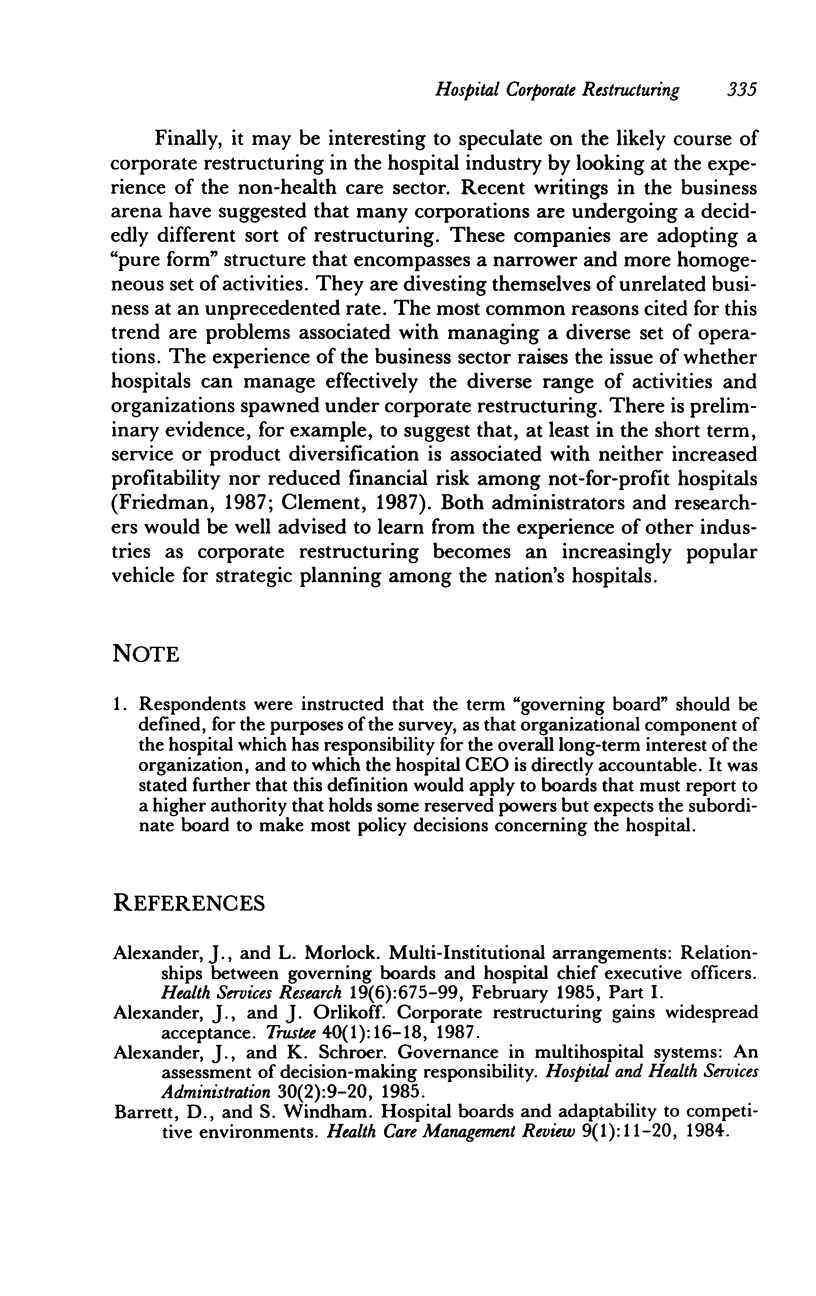
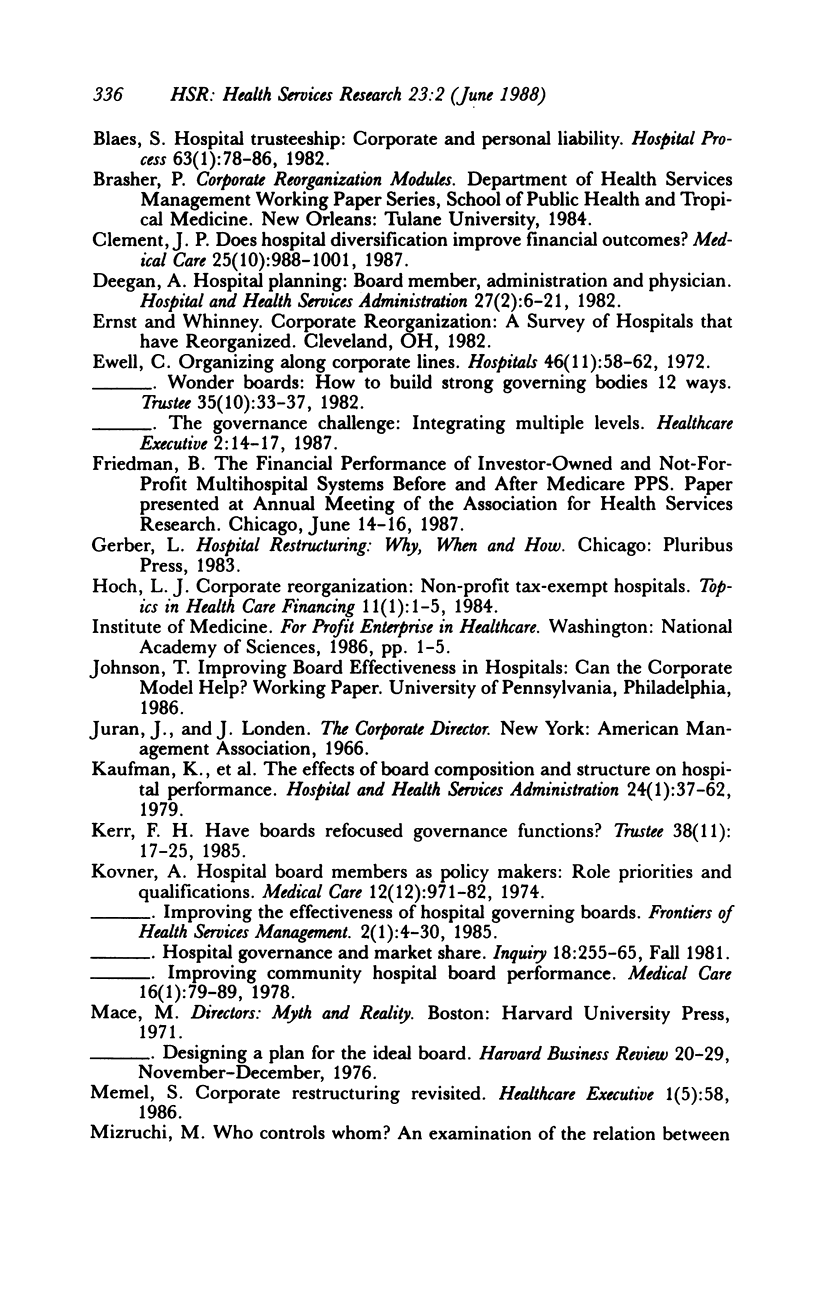
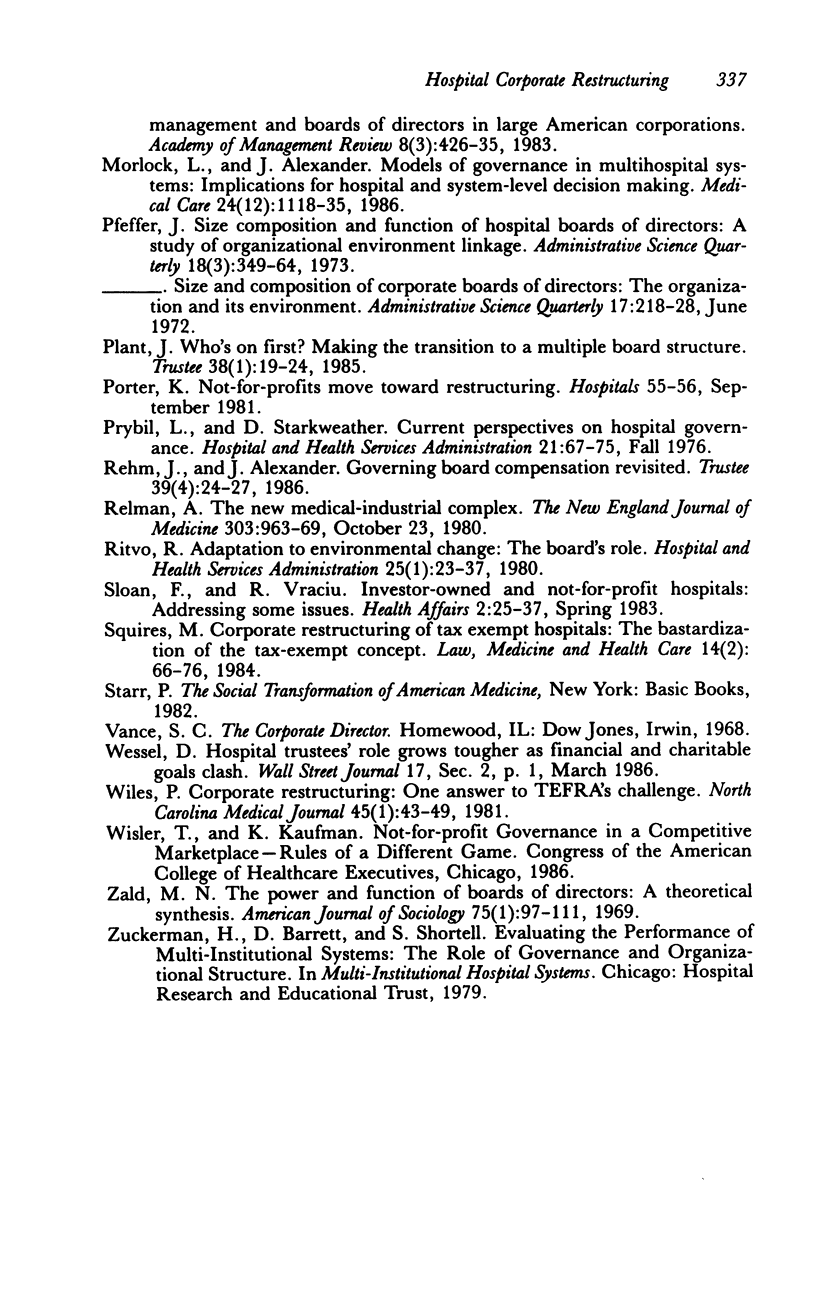
Selected References
These references are in PubMed. This may not be the complete list of references from this article.
- Alexander J. A., Orlikoff J. E. Hospital corporate restructuring gains widespread acceptance. Trustee. 1987 Jan;40(1):16–18. [PubMed] [Google Scholar]
- Alexander J. A., Schroer K. A. Governance in multihospital systems: an assessment of decision-making responsibility. Hosp Health Serv Adm. 1985 Mar-Apr;30(2):9–20. [PubMed] [Google Scholar]
- Alexander J., Morlock L. L. Multi-institutional arrangements: relationships between governing boards and hospital chief executive officers. Health Serv Res. 1985 Feb;19(6 Pt 1):675–699. [PMC free article] [PubMed] [Google Scholar]
- Barrett D., Windham S. R. Hospital boards and adaptability to competitive environments. Health Care Manage Rev. 1984 Fall;9(4):11–20. doi: 10.1097/00004010-198400940-00003. [DOI] [PubMed] [Google Scholar]
- Blaes S. M. Hospital trusteeship: corporate and personal liability. Hosp Prog. 1982 Jul;63(7):78-83, 86. [PubMed] [Google Scholar]
- Clement J. P. Does hospital diversification improve financial outcomes? Med Care. 1987 Oct;25(10):988–1001. doi: 10.1097/00005650-198710000-00007. [DOI] [PubMed] [Google Scholar]
- Coyne J. S. The financial characteristics of MIOs: entering an era of price competition. Top Health Care Financ. 1984 Winter;11(2):1–18. [PubMed] [Google Scholar]
- Deegan A. X., 2nd Hospital planning: board member, administrator and physician. Hosp Health Serv Adm. 1982 Mar-Apr;27(2):6–21. [PubMed] [Google Scholar]
- Ewell C. M., Jr Organizing along corporate lines. Hospitals. 1972 Jun 1;46(11):58–62. [PubMed] [Google Scholar]
- Kaufman K., Shortell S., Becker S., Neuhauser D. The effects of board composition and structure on hospital performance. Hosp Health Serv Adm. 1979 Winter;24(1):37–62. [PubMed] [Google Scholar]
- Kerr F. H. Have boards refocused governance functions? Trustee. 1985 Nov;38(11):17-20, 25. [PubMed] [Google Scholar]
- Kovner A. R. Hospital board members as policy-makers: role, priorities, and qualifications. Med Care. 1974 Dec;12(12):971–982. doi: 10.1097/00005650-197412000-00001. [DOI] [PubMed] [Google Scholar]
- Krinsky M. L. Exercise to build organizational strength. Healthc Exec. 1986 Sep-Oct;1(6):58–61. [PubMed] [Google Scholar]
- Morlock L. L., Alexander J. A. Models of governance in multihospital systems. Implications for hospital and system-level decision-making. Med Care. 1986 Dec;24(12):1118–1135. doi: 10.1097/00005650-198612000-00005. [DOI] [PubMed] [Google Scholar]
- Plant J. Who's on first? Making the transition to a multiple-board structure. Trustee. 1985 Aug;38(8):19–22. [PubMed] [Google Scholar]
- Prybil L. D., Starkweather D. B. Current perspectives on hospital governance. Hosp Health Serv Adm. 1976 Fall;21(4):67–75. [PubMed] [Google Scholar]
- Rehm J. L., Alexander J. Perks for trusteeship: compensation survey reveals who, what, how much, and how often. Trustee. 1986 Apr;39(4):24–27. [PubMed] [Google Scholar]
- Relman A. S. The new medical-industrial complex. N Engl J Med. 1980 Oct 23;303(17):963–970. doi: 10.1056/NEJM198010233031703. [DOI] [PubMed] [Google Scholar]
- Ritvo R. A. Adaptation to environmental change: the board's role. Hosp Health Serv Adm. 1980 Winter;25(1):23–37. [PubMed] [Google Scholar]
- Wiles P. M. Corporate restructuring: one answer to TEFRA's challenge. N C Med J. 1984 Jan;45(1):43–46. [PubMed] [Google Scholar]


